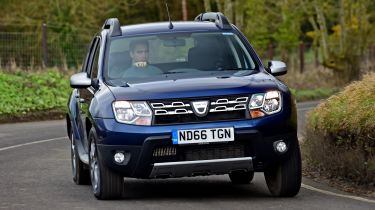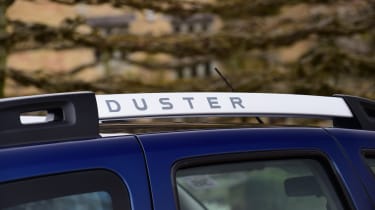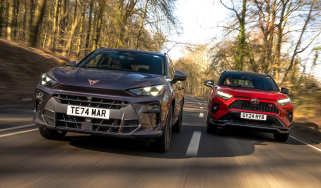Dacia Duster (2009-2017) review - MPG, CO2 and Running Costs
Diesel fuel economy is average compared to rivals but the petrol is uncompetitive

The two older Renault-derived engines are both familiar units – and the best choice is the dCi diesel. Fuel economy isn’t exceptional by modern standards, but all diesels crack 60mpg. CO2 emissions of between 115 and 123g/km aren’t bad either. Those after an auto will be pleased to learn the efficient EDC dual-clutch box returns almost identical fuel economy and emissions as the manual. Stop-start or any other green assist features are unavailable on any Duster, though.
The entry level petrol engine is much less competitive. It averages 41.5mpg with 4x4, or 44.1mpg in two-wheel-drive format - figures we used to associate with 1.6 petrol cars of a decade ago. CO2 is up to 155g/km.
The 1.2-litre turbocharged petrol option is not that attractive from a running cost point of view either. It might be a bit pokier than the 1.6, but it only manages 46.3mpg and 44.1mpg in 2x4 and 4x4 guise respectively. Emissions range from 138 to 145g/km of CO2.
Insurance groups
The 1.6 Access petrol reflects its basic nature with a supermini-like group 6 insurance rating. Its unpainted black bumpers will be cheap to repair and there’s so little kit as standard, it’s unlikely to attract much attention in a car park.
Used - available now

2022 Dacia
Duster
30,755 milesManualDiesel1.5L
Cash £13,400
2023 Dacia
Duster
15,733 milesAutomaticPetrol1.3L
Cash £16,963
2017 Dacia
Duster
49,163 milesManualDiesel1.5L
Cash £8,500
2020 Dacia
Duster
60,148 milesManualPetrol1.3L
Cash £9,906The stronger everyday performance and more complex nature of diesel-engined Ambience models means insurance group ratings take a jump up to group 10. Laureate models are higher still, at group 11 – although do note the theoretically more secure handling of Laureate 4x4 models pitches them a group lower, back in group 10.
Laureate Prime Dusters will be the most expensive to insure, with the 4x2 model coming in at group 12. Again, the 4x4 has an advantage, at group 11.
An alarm isn’t standard on any Duster variant, but is offered as part of the £595 protection pack, which also includes rear parking sensors and extra tailgate protection.
Generally, the Dacia Duster holds a significant insurance group advantage other compact SUVs. The base Nissan Qashqai 1.5 dCi Visia, for example, starts at group 17.
Depreciation
Not only is the Duster cheap to buy, but it also holds on to a good proportion of its value on the used market. It’s a popular car that’s in demand, which helps retained values remain comparable or even slightly better than rivals from Skoda, Kia and Hyundai.
Because the list prices are so very low, the monetary cost of depreciation will be thousands less than comparable compact SUVs.
Some versions do perform better than others, though. The Laureate is sought after because used buyers know it will come with air-conditioning as standard, for example; the base Access is less appealing because of its solid white paint and thirsty 1.6-litre petrol engine.








